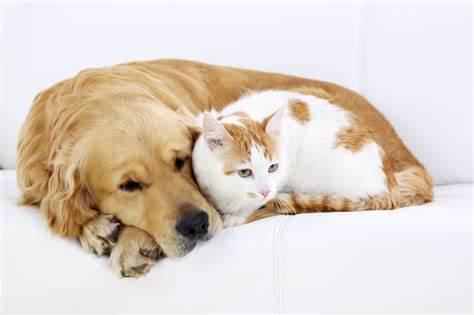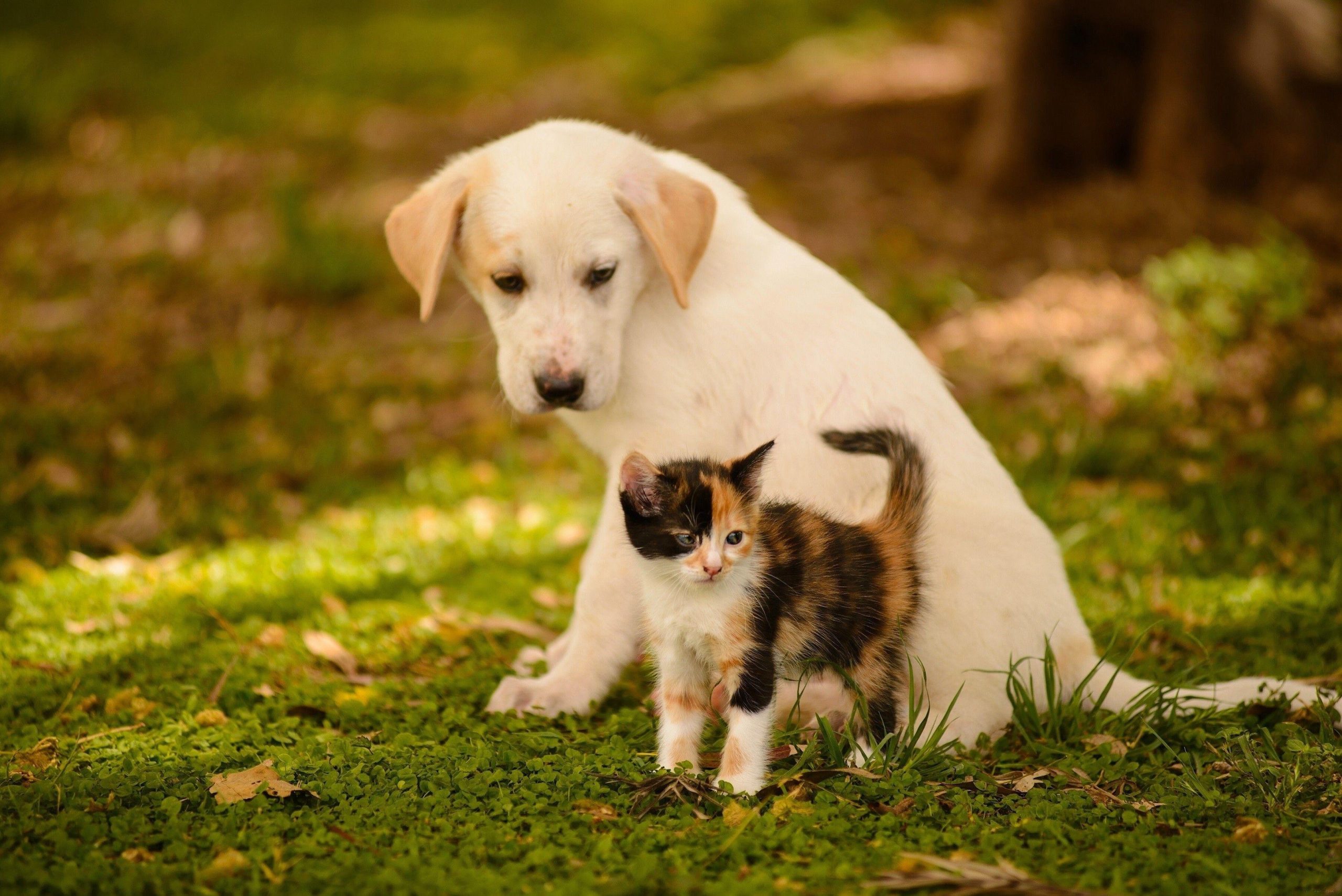Introducing a dog and cat takes patience, but with proper planning and training, cats and dogs can become the best of friends. By using rewards-based techniques, providing physical separation when needed, and showing each pet love, you can facilitate harmony between species. With time and effort, your dog and cat can forge a comfortable companionship.
Choose Pets with Compatible Temperaments
Start by selecting a dog breed and individual known for having lower prey drive and being gentle with cats. Breed traits are tendencies – individual personalities matter too. Similarly, choose an easygoing, dog-savvy cat. If possible, look for pets who previously coexisted happily with other species. Avoid high-strung animals prone to conflict.
Arrange a Careful Introduction
Go slow with first interactions on neutral territory like outside on leash:
- Swap blankets between pets so they become accustomed to each other’s scent.
- Positively reinforce calm behavior between them.
- If fearful or aggressive reactions occur, try again another day at a slower pace. Don’t force interaction.
Closely supervise, interrupt unwanted chasing, and separate the pets if either remains distressed.

Provide the Cat with Escape Routes
Install cat trees, perches and baby gates so kitty can easily retreat when needed:
- Cat doors allow access to off-limit rooms.
- Furniture, shelves and window seats create vertical getaways.
- Hidey-holes and tunnels let them observe from a safe distance.
Ensure food, water and litter boxes are easily accessed without confronting the dog.
Train Your Dog to Be Gentle
Use positive reinforcement to teach your dog polite cat manners:
- Practice “leave it” using cat toys as bait to prevent chasing.
- Reward calm investigatory sniffing of kitty’s belongings – correct rowdy pawing.
- If aggressive drive kicks in, interrupt and redirect to a “sit” for praise.
- Praise polite coexistence; correct chasing using toys or time outs, not physical punishment.
Set them up to succeed until good habits are learned. Always supervise early interactions.
Give Your Pets Quality Solo Time
Make sure each still enjoys one-on-one affection and playtime:
- Take the dog on walks, play fetch and train tricks to satisfy exercise needs.
- Offer catnip toys and floor play sessions tailored to feline interests.
- Spend solo lap and brushing time with both pets.
Giving them both fulfillment reduces jealousy and competition for attention.

Make New House Rules
Establish structure and routines that enable cooperative sharing of space:
- Feed pets in separate areas at scheduled times to reduce resource guarding.
- Confine less trustworthy pets during mealtimes for safety.
- Identify preferred resting spots and ensure access for each animal.
- Provide duplicate resources like water bowls and litter boxes.
- Crate train dogs or confine cats when unsupervised until you’re certain they get along.
Consistent house rules avoid crowding issues leading to conflict.
Be Patient and Reward Desired Behaviors
Don’t expect immediate closeness. The adjustment period may take weeks or months:
- Allow each pet to warm up at their own pace.
- Provide treats when they successfully coexist peacefully.
- If tensions arise, separate without scolding before aggression occurs.
- Seek help from a certified behaviorist for ongoing aggression problems.
With time, space and positive associations, many cats and dogs forge rewarding friendships!
Conclusion
Blending cats and dogs into a harmonious home requires planning, training and patience. But by choosing compatible pets, going slow with introductions, providing escape outlets, doing individual bonding activities, and rewarding progress, you can facilitate interspecies friendships. With effort, your pets can become partners in companionship for years to come.

Frequently Asked Questions About Cat and Dog Coexistence
What are signs my pets are ready for full unsupervised access?
Indicators of readiness for total access include mutually seeking affection, resting near each other by choice, playfully interacting, and displaying no fear or aggression for long periods of time.
How long does the adjustment period take on average?
Timeframes vary, but most cats and dogs need at least 2-3 months of gradual supervised introduction and training before they can safely and happily coexist together alone.
Is it a lost cause if my pets still fight after months?
Not necessarily. Some pets need even more extremely slow introductions or may never fully get along. As long as overt aggression is managed, they may learn to mutually coexist through vigilance.
Should I intervene when play gets rough?
Yes, since dogs can unintentionally injure cats. Redirect rough play, reward gentle play, and separate if needed to prevent trauma.
Why does my cat swat at my dog?
Cats convey dislike through swatting. If the dog is respectful, it’s harmless communication. But interrupt aggressive swatting to prevent pain or trauma.



